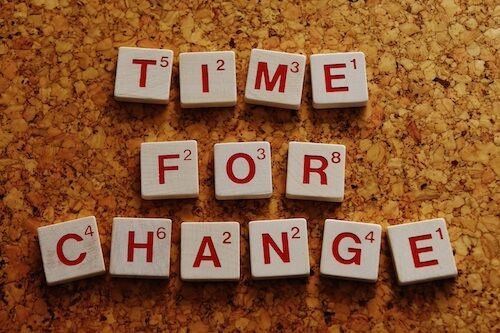“This year,” Nia promised, “I’m going to make some real changes! I’m going to be a more patient, attentive listener at work, and I’m going to get back in shape and go the gym.”
She was excited and enthusiastic. Nia’s willpower was a force of nature to be reckoned with!
We know how this typically ends. Ten weeks later Nia hadn’t gone to the gym for two weeks and was regularly interrupting team members when they tried to make a point.
People put together all kinds of goals and that’s great, but most rely on sheer willpower to try to make changes and accomplish their goals. Willpower can get you started, but it can’t deliver sustainable results.
What Nia needs is a structure to support each goal. The problem with willpower is that it has limits. “Willpower acts like a reservoir,” said Maren Perry, president of Arden Coaching. “When we use it, willpower levels go down. It gets depleted.” Perry says that your reservoir of willpower needs to be recharged, and that’s the problem. “It’s simply not available all the time. And if you have more than one goal, using your reservoir of willpower to accomplish goal 1, leaves nothing left to accomplish goal 2.”
When Arden Coaching works with someone in an executive coaching engagement, they have specific, proven approaches to help their clients make changes. First, an executive coach will dig deeper to explore your mindset — the assumptions and the “why” behind your current behaviors. For more, read “Don’t Rely on Willpower to Drive Change.”
Structure “Sufficient to Your Resistance”
An executive coach will explore and help determine the specific structures you need to support change. If there’s something you’ve wanted to do but haven’t done before, there’s a reason. “This is probably not the first time Nia has thought about getting back in shape, or being a better listener,” said Perry.
“Why does Nia continue to skip the gym when that is something she clearly wants to do?” Perry says structure needs to be put in place that is “sufficient to Nia’s resistance.”
Does she need to get up earlier, or reschedule gym time for after work? Do two alarm clocks (or three) need to be set? Does the gym need to offer a sauna, so there’s a reward for her at the end of the workout? Does Nia need to pay a personal trainer to reinforce discipline and accountability?
The supporting framework needs to be created at the beginning, because our emotional desire to make change will fade. According to Perry, the structures are needed until the behavior you want becomes a habit. “The length of time varies by individual. For some, four weeks with a personal trainer, and they are set. For others, it’s been five years and they still need a personal trainer to keep them going to the gym. We need a structure that works for us.”
Cues and Behaviors: Doodling and Interrupting
Executive coaches also recognize that cues trigger behavior that lead to habits — both good and bad. A coach helped Nia realize that she often doodled while a team member spoke. She was mentally organizing a reply, not listening. That typically led to interruption and talking over people.
The coach worked with Nia to identify the behavior, create an action plan, and change the cue — when someone began to speak, she put the pen down. Putting the pen down became the new cue to listen. For more about the science of habit, read “Change a Habit, Change Your Life!” and “The Power of New, Improved Habits for Managing Leadership Stress.”
Don’t try to accomplish your goal with sheer willpower. For long-term, sustainable results, understand your mindset and create a framework that helps you make the change. The expert, objective insight of an executive coach will help.
To learn more about executive coaching and making changes that create sustainable results, contact us at admin@ardencoaching.com or 646.844.2233.

